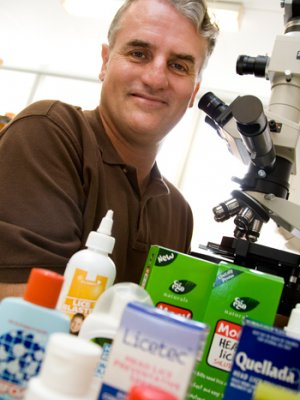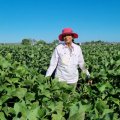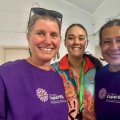
About one in five primary school-aged children will contract head lice this year in Australia, according to a University of Queensland academic.
“Head lice are a real challenge for parents,” said Associate Professor Steve Barker, of the UQ School of Chemistry and Molecular Biosciences.
“It is often the most common infectious agent in primary school children in Australia, after the common cold.
“Many parents tell me they spend $100-$200 before they find a solution that works for their family.”
Associate Professor Barker is an international expert on the evolution, control, biology and genetics of head lice, and has been studying lice for 25 years.
His most recent findings on head lice treatments are in a paper that will be submitted to the International Journal of Dermatology.
“About 15 to 30 percent of primary school-aged children get infected at least once each year,” he said.
“Parents can take heart that getting rid of head lice is difficult, but possible.”
The University of Queensland will launch the inaugural National Head Lice Awareness Day on Friday, February 4.
Associate Professor Barker said the National Head Lice Awareness Day aimed to assist parents by increasing community awareness of this important issue.
An important theme for the day was for parents to be vigilant.
“Knowing for sure whether or not your child is infected with head lice is the first and perhaps most important step, then take action,” he said.
“After you take action, find out whether your intervention worked or not.”
If the first attempt failed, then they needed to try something different. The best way to diagnose infections was with a good head louse comb and hair conditioner.
1. Parents could then choose between a head louse comb and the hair conditioner method, and a medicated shampoo or lotion. Note that some shampoos and lotions work better than others.
2. Re-infection is likely so “check weekly”
3. There are many urban myths. There is no need to treat towels, bed-linen or clothes.
For further information, visit Associate Professor Barker’s webpage at: http://www.scmb.uq.edu.au/staff/stephen-barker
Head lice from The University of Queensland on Vimeo.
Media contacts: Associate Professor Stephen Barker: email: s.barker@uq.edu.au, Wk: (07) 3365 3303 or Mb: 0421 695 550 or Jan King 0413 601 248.
.jpg)











